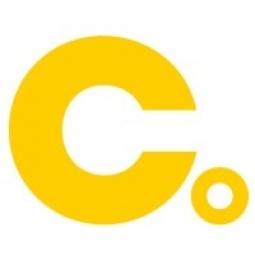Customer Company Size
Mid-size Company
Region
- Europe
Country
- United Kingdom
Product
- Web Security
- Cloud Application Security (CASB)
Tech Stack
- Security as a Service
Implementation Scale
- Enterprise-wide Deployment
Impact Metrics
- Cost Savings
- Customer Satisfaction
Technology Category
- Cybersecurity & Privacy - Cloud Security
Applicable Industries
- Healthcare & Hospitals
Applicable Functions
- Business Operation
Use Cases
- Cybersecurity
Services
- Cloud Planning, Design & Implementation Services
About The Customer
The Disabilities Trust is a charity working alongside people with an acquired brain injury to help them live as independently as possible. Their dedicated teams of specialists work closely with each person with a brain injury to understand what they want and why, and shape treatment. It’s the largest not-for-profit brain injury service provider in the UK, and its services support around 750 people each year. Its work is crucial – and with its focus on frontline care and its contact with vulnerable adults – the impact of a data breach could be devastating.
The Challenge
The Disabilities Trust, a UK-based charity, was facing significant insider threats and the growing risk of ransomware attacks. It needed a total overhaul of its web and cloud application security to protect staff and patients alike. The organization's user activity and privacy controls needed significant attention. The biggest threat was the insider threat – inside out, not outside in. Whether that’s leavers exfiltrating the organization's IP or confidential patient information being unwittingly shared on public forums, the impact could be critical – both reputationally, and for the people they support.
The Solution
To meet these requirements, The Disabilities Trust decided to implement a Security as a Service approach. They wanted something effective and easy to deploy that would work straight out of the box. They ran a demo, and within 20 minutes they had pushed the agent to the desktop with rule-based criteria and were applying standard rules. Within an hour they could start blocking risky web and cloud app activity: the account was up and running almost immediately. Censornet’s integrated platform gives Graham’s team access to granular, user-friendly reports, which enable them to evaluate their complete environment, deeply understanding infrastructure and uncovering gaps in their protection.
Operational Impact

Case Study missing?
Start adding your own!
Register with your work email and create a new case study profile for your business.
Related Case Studies.

Case Study
Hospital Inventory Management
The hospital supply chain team is responsible for ensuring that the right medical supplies are readily available to clinicians when and where needed, and to do so in the most efficient manner possible. However, many of the systems and processes in use at the cancer center for supply chain management were not best suited to support these goals. Barcoding technology, a commonly used method for inventory management of medical supplies, is labor intensive, time consuming, does not provide real-time visibility into inventory levels and can be prone to error. Consequently, the lack of accurate and real-time visibility into inventory levels across multiple supply rooms in multiple hospital facilities creates additional inefficiency in the system causing over-ordering, hoarding, and wasted supplies. Other sources of waste and cost were also identified as candidates for improvement. Existing systems and processes did not provide adequate security for high-cost inventory within the hospital, which was another driver of cost. A lack of visibility into expiration dates for supplies resulted in supplies being wasted due to past expiry dates. Storage of supplies was also a key consideration given the location of the cancer center’s facilities in a dense urban setting, where space is always at a premium. In order to address the challenges outlined above, the hospital sought a solution that would provide real-time inventory information with high levels of accuracy, reduce the level of manual effort required and enable data driven decision making to ensure that the right supplies were readily available to clinicians in the right location at the right time.

Case Study
Gas Pipeline Monitoring System for Hospitals
This system integrator focuses on providing centralized gas pipeline monitoring systems for hospitals. The service they provide makes it possible for hospitals to reduce both maintenance and labor costs. Since hospitals may not have an existing network suitable for this type of system, GPRS communication provides an easy and ready-to-use solution for remote, distributed monitoring systems System Requirements - GPRS communication - Seamless connection with SCADA software - Simple, front-end control capability - Expandable I/O channels - Combine AI, DI, and DO channels

Case Study
Driving Digital Transformations for Vitro Diagnostic Medical Devices
Diagnostic devices play a vital role in helping to improve healthcare delivery. In fact, an estimated 60 percent of the world’s medical decisions are made with support from in vitrodiagnostics (IVD) solutions, such as those provided by Roche Diagnostics, an industry leader. As the demand for medical diagnostic services grows rapidly in hospitals and clinics across China, so does the market for IVD solutions. In addition, the typically high cost of these diagnostic devices means that comprehensive post-sales services are needed. Wanteed to improve three portions of thr IVD:1. Remotely monitor and manage IVD devices as fixed assets.2. Optimizing device availability with predictive maintenance.3. Recommending the best IVD solution for a customer’s needs.

Case Study
HaemoCloud Global Blood Management System
1) Deliver a connected digital product system to protect and increase the differentiated value of Haemonetics blood and plasma solutions. 2) Improve patient outcomes by increasing the efficiency of blood supply flows. 3) Navigate and satisfy a complex web of global regulatory compliance requirements. 4) Reduce costly and labor-intensive maintenance procedures.

Case Study
Cloud-based healthcare solution for Royal Philips
Royal Philips wanted to launch its cloud-based healthcare solution HealthSuite Digital Platform in China to deliver services to help cope with challenges related to urbanization and population growth. Philips wanted to achieve this goal by combining mobile, cloud computing and big data technologies. To bring this platform and product to market, Philips required cloud computing and local technical service capabilities in China, in addition to a flexible IT infrastructure that could handle user requests.








